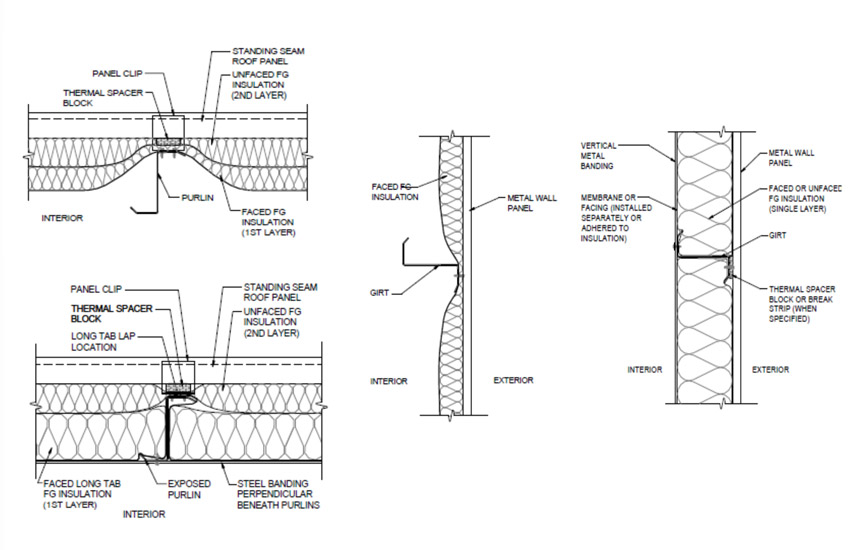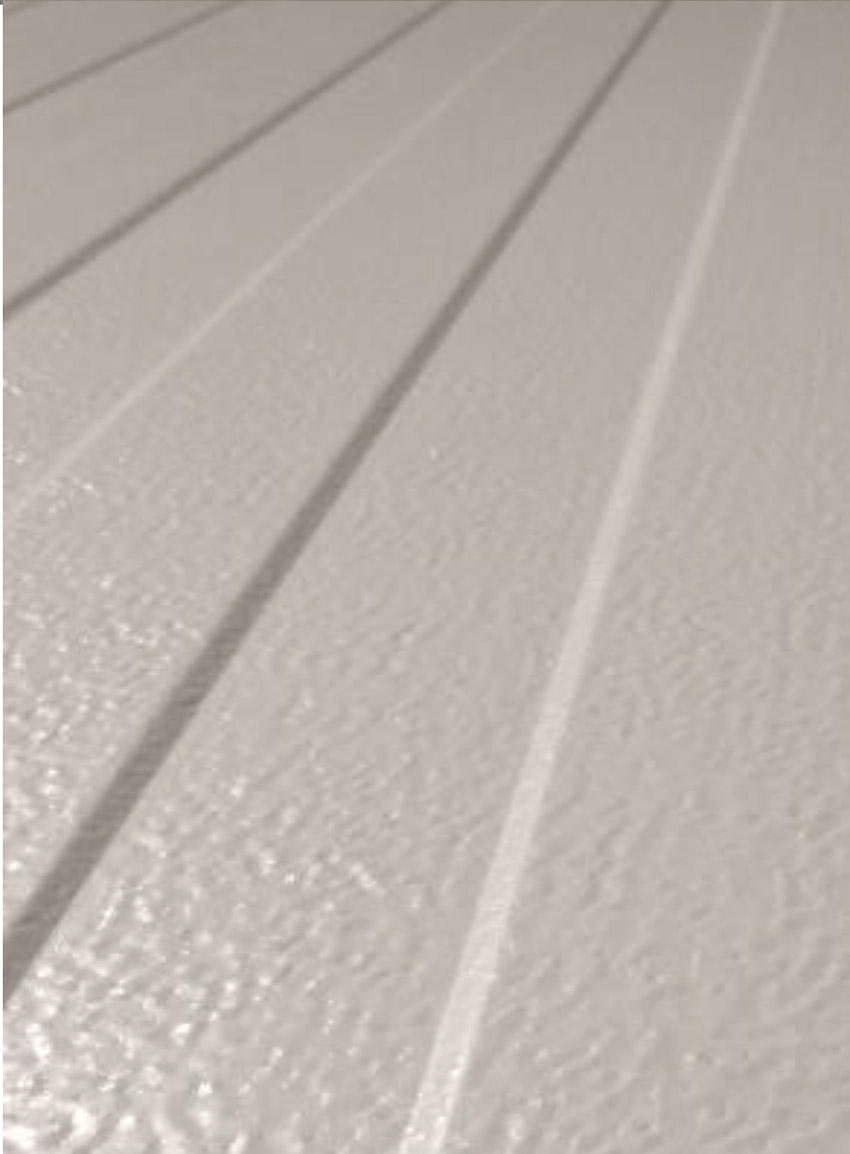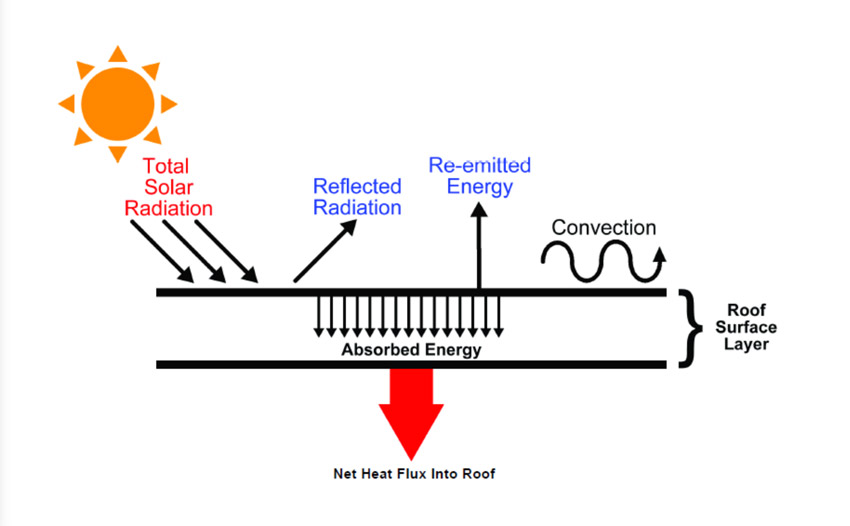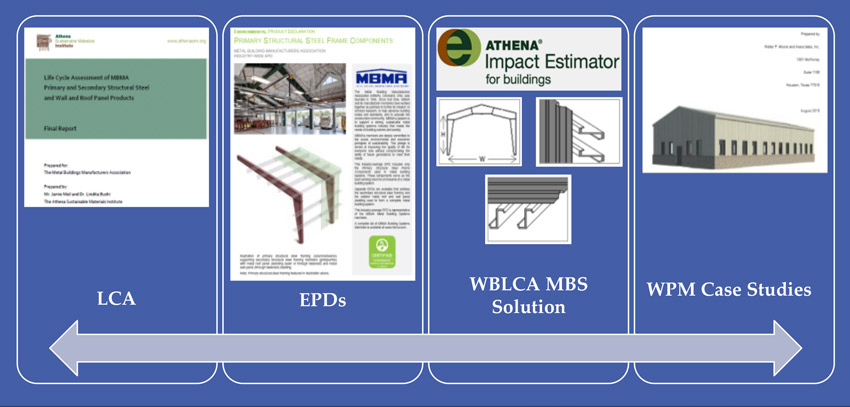Sustainable Metal Buildings
The Building Envelope
Beyond the structure, most metal building manufacturers offer a complete building enclosure package of components. This commonly includes, at a minimum, a wide range of metal wall cladding and metal roofing in a variety of profiles, colors, and types. Since these are made of steel with factory-applied finishes that are durable and long lasting, they are inherently sustainable. Further, most of them have been engineered and tested as roofing and wall systems to meet stringent requirements for resistance to wind, hail, rain, fire, and other hazards, contributing to the overall resilience of the enclosure. Architectural preferences for wall finishes are what makes metal buildings so adaptable for any application. While the metal building manufacturer may not provide an architectural wall finish such as brick, concrete masonry, glass, etc., the metal building is readily designed to accommodate the required interface.
Insulation
Any discussion of a building enclosure needs to address energy performance, and metal buildings have made significant advances in this regard. Energy codes recognize metal building systems as a distinct construction type and provide minimum requirements for insulation in their exterior walls and roofs. That insulation can take different forms based on the specific details of construction. One of the most common methods has been to drape fiberglass batt insulation over the outside of metal purlins and then fasten the metal roofing or siding to the purlins through the insulation. The fiberglass insulation may have a liner facing the building interior (commonly referred to as liner system) that acts as a vapor retarder and general covering of the insulation that may be left as a finish surface or covered with any common finish such as gypsum board. Either way, draping the fiberglass is time efficient but compresses the insulation at each purlin, reducing its energy-conserving effectiveness. In response, thermal spacer blocks made of rigid insulating material can be placed along the metal purlins to reduce the thermal transmission along those lines. Energy codes require such thermal spacing blocks to carry a minimum R-value on the order of R-3 to R-5 where they are acceptable for use. The insulation itself may carry R-values of R-19 to R-30 or more in the sections where it is not compressed. Either way, hot-box testing of multiple metal building and wall assemblies can provide owners or design professionals the necessary information for demonstrating compliance with the adopted energy codes.

Shown are examples of different methods of using fiberglass insulation in wall and roof assemblies in manufactured metal buildings.
In many climate zones, there is a need for higher energy performance, and both the energy codes and metal building manufacturers have responded. Instead of using only a single layer of fiberglass insulation, it is now routine to use a double layer: one that is installed between the metal framing members and one that is continuous over the outside of those framing members. The metal roofing or siding is then held off from the purlins or girts with mounting clips spaced at intervals appropriate to structural needs. In lieu of fiberglass, foam plastic insulation may be used whether in the form of rigid boards applied to the outside of the structure or spray foam that fills all of the framing cavities completely. In either case, fully insulated metal buildings that meet or exceed code requirements are readily achievable with this field installed method.

Insulated metal panels (IMPs) use rigid, high-efficiency foam plastic insulation between an inner and outer metal skins to create a continuous building enclosure panel.
A factory-installed insulation method is also available in the form of insulated metal panels (IMPs). In this case, an inner and outer metal skin is filled with foam plastic insulation to create a rigid, durable, prefinished panel. The exterior surface is metal siding or metal roofing in a typical choice of profiles and colors. The interior surface is a simple prefinished metal skin. The edges are formed so panels overlap or interlock and are typically designed with thermal breaks so the inner and outer metal skins do not touch, thus avoiding thermal bridging between inside and outside. The edge details also allow for continuous sealing using gaskets, caulk, or sealants as appropriate. The panels are typically fastened to the structure using concealed clips and screws compatible with the IMP system. Thus a continuous, factory finished installation is achieved over the outside of the building structure with a durable interior skin facing inward. This provides a continuous enclosure system that can be specified to comparatively high insulation levels. The attributes of the foam insulation used can range from R-5 to R-7 per inch, allowing IMPs to readily meet and exceed energy code requirements with less wall or roof thickness than fiberglass systems.
Air Sealing
A significant source of energy loss occurs from air infiltration or exfiltration in buildings. Energy codes recognize this and now have mandatory provisions for addressing it for all types of construction, including metal buildings. The details of ensuring proper air sealing remain with the design and construction professionals involved in a project, but metal building manufacturers have acknowledged this need and facilitated good air sealing. Metal roofing and wall cladding qualify as an air barrier under the codes (i.e., sheet steel or aluminum is one of 16 listed air barrier materials), but the edges and penetrations need to be treated. This is accomplished in the usual manner by using gaskets, sealants, or caulking suitable to the panel type and installation.
Customizable Fenestration
All buildings need fenestration openings for access, light, and ventilation. Providing those openings in a manner that is sustainable is a function of controlling the things that pass through them. Hence, it is important for windows, doors, and skylights to admit visible light but restrict the amount of solar heat gain if air-conditioning is in use. Similarly, restricting heat loss and air infiltration through fenestration becomes paramount when the building is being heated. In that regard, the fenestration industry has made available a full range of product choices that have performance characteristics related to overall thermal U-factors, solar heat gain coefficient (SHGC), visible light transmission (VT), and air infiltration. Any of these commercial products can be specified and selected to be incorporated into metal buildings. In some cases, the metal building manufacturers may offer their own customizable products in the form of windows, skylights, and even translucent wall and roof panels that are readily incorporated into a building.
In finding the right balance of fenestration characteristics, a sustainability trait worth focusing on is the use of natural daylight. The benefits of energy conservation can be realized when daylight is harnessed to replace the need for electric lighting in a building. This is readily done in a metal building, particularly since many of them are low rise and can incorporate skylights between the structural members to illuminate the interior spaces. Many retailers with large sales floor areas have recognized this, and it is common to find skylights linked with automatic controls to dim or turn off electric lights in retail stores such as Walmart, Home Depot, Costco, supermarkets, and others. This same concept is readily applied to virtually any metal building.
In addition to energy cost savings, providing daylight and views are part of the definition of most sustainable and green buildings. This is based on the documented health and well-being benefits on people that have been evidenced. It is common to locate windows and skylights throughout occupied spaces so that all or at least most of the people in those spaces can access a view to the exterior and benefit from some natural daylight. This is quite achievable in metal buildings just as with any other building construction system—it is wholly predicated on the design.

Daylight can be incorporated in metal buildings using windows, skylights, or translucent panels—some of which can be supplied as part of a manufactured metal building package.
Cool Roofs
In recent years, there has been a recognition that sunlight striking dark-colored surfaces such as roofs can contribute to creating higher air temperatures around buildings. In the interest of reducing the creation of “heat islands,” lighter-colored roofs have become a common sustainability strategy. Green building rating systems use defined criteria and nationally recognized sources to quantify how effective any particular roof can be in reducing heat absorption to determine if they qualify as a “cool roof” or not. Research from the U.S. Department of Energy shows that one additional percentage of reflectivity in a roof coating, on average, will reduce roof temperature by 1 degree.
A common calculation used to define a cool roof is the solar reflectance index (SRI) as defined in ASTM E1980: Standard Practice for Calculating Solar Reflectance Index of Horizontal and Low-Sloped Opaque Surfaces. SRI is a method to obtain an index for relative surface temperature with respect to a standard white (SRI = 100) and a standard black (SRI = 0) under standard solar ambient conditions and wind speed. In order to accurately determine the SRI of many materials, The Cool Roof Rating Council (CRRC) was established in 1998 and administers a Product Rating Program in which companies can label roof surface products with radiative property values. All radiative roofing tests and aged field tests are conducted by CRCC approved facilities.

A cool metal roof is one that has been manufactured and coated to reflect noticeably more sunlight than it absorbs thus reducing the heat generated by the surface.
The MBMA has been an active member in the CRRC since its founding and has worked with the CRRC through the Cool Metal Roofing Coalition. Metal building manufacturers can supply roof systems in a wide range of profiles and thousands of colors. Rating each material would be onerous as well as prohibitively expensive. As a result, the CRRC adopted the Color Family Program, which is a predefined range of “L,” “a,” and “b” color values on the Hunter Lab Color Scale that establishes the color space for a CRRC predefined set of 17 colors.
Compared to all other cool roof products, metal roofing stands out in terms of long-term performance. Both painted and unpainted metal roofs exhibit sustainable reflectance and emittance values in even the harshest environments. One reason for their outstanding performance is their ability to “self-clean” with rainwater and their inherent resistance to mold and mildew growth. These factors, in addition to the ability to expand and contract with fluctuations in the roof temperature, make metal an excellent choice for cool roofing.
Material Life-Cycle Assessments
LCAs are recognized as the most effective means to holistically assess the impacts that materials and processes have on the environment and on people too. In that light, the MBMA has funded extensive research related to the environmental impacts of metal building systems. Through collaboration with the Athena Sustainable Materials Institute and UL Environment, MBMA developed an industrywide LCA report and three industrywide environmental product declarations (EPDs) for designers to use when specifying MBMA-Member products. The purpose of this effort was to conduct an LCA to benchmark the average environmental impacts of the structural and panel products used in metal building systems as manufactured by its member companies.

The MBMA has facilitated the creation of LCAs and EPDs for metal building systems that have been used as the basis for additional comparative studies and analyses.
The LCA study focused on both MBMA member company manufacturing processes (gate-to-gate) as well as four key product profiles (cradle-to-gate): primary structural frame, secondary structural components, metal wall cladding, and metal roofing. The respective gate-to-gate (G2G) process and cradle-to-gate (C2G) product environmental profiles are used by MBMA for environmental benchmarking purposes. This study did not consider the installation, use, or end-of-life phases of these products. Consequently, the C2G LCA results without end-of-life recycling as portrayed in this study are considered conservative.
The Executive Summary of the report states: “A contribution analysis [conducted as part of the project] revealed that the G2G processing generally accounted for 4 percent to 16 percent of the total primary energy use and 3 percent to 12 percent of the global warming potential (GWP) of the total C2G product system.” These low numbers suggest that the metal building manufacturing process accounts for a small portion of the total embodied energy in the steel. This is reinforced as the report goes on to say: “Upstream steel production is the single and most significant input driving the environmental burden of all four products looked at.” Getting a bit more specific, it states: “Generally, the upstream production and delivery of steel inputs was more significant for wall and roof panels (due to the inclusion of high-performance coatings and paints) than the semifinished steel inputs used in the production of primary and secondary frame components. On a unit of output basis, wall and roof cladding embodies more energy and results in more emissions than either primary or secondary frame components.”
In the interest of identifying areas for improvement, the report points out “Electricity use, especially in the production of primary and secondary frame materials, was the main energy input used in MBMA plants and varied by as much as 20 percent across plants producing the same component. Curbing in-plant electricity use would yield the greatest improvement in plant operations.”
Building Mechanical and Electrical Systems
All modern buildings rely on using energy to run mechanical and electrical equipment for conditioning the spaces in them, lighting them, or other operating aspects. Using energy efficiently for these purposes is paramount in energy codes and green building programs. There are two things to keep in mind in this regard to metal buildings per the following.
HVAC and Electrical Systems
There is nothing about a metal building system that restricts or limits the available choices in energy-efficient and environmentally friendly HVAC systems. Rather, the selection and sizing of that equipment will be based on good engineering principles, the available energy sources to run the equipment (electric, natural gas, steam, etc.), and the preferences of the building owner/operators, which may be influenced by cost. More relevant is the design of an energy-conserving building envelope, which, if done properly, will lower the heating and cooling load of the building to begin with, thus reducing the size of the equipment. Smaller-sized equipment usually means less initial costs, less operating cost over time, and less replacement cost at the end of its service life. Hence, a properly designed metal building has all of the energy efficiency and cost savings potential of any other building for HVAC systems with no restrictions.
Similarly, there is nothing inherent about a metal building that restricts the design and layout of electrical items within a building. In fact, the use of natural light can enhance the options for electrical lighting and allow for more choices and more creativity in the way electrical lighting is laid out and used in the building.









